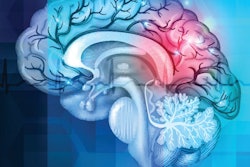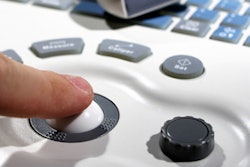
In a novel study that tracked employees at a Spanish bank, researchers used PET/MRI to detect signs of atherosclerotic disease and inflammation in arterial regions that had not yet developed plaques. The finding could provide an early biomarker of future risk of heart attack and stroke.
The results were published online on 25 March in the Journal of the American College of Cardiology and come from a collaboration between the Progression of Early Subclinical Atherosclerosis (PESA) project, researchers at the Centro Nacional de Investigaciones Cardiovasculares (CNIC) in Madrid, and Banco Santander, a Spanish multinational commercial bank and financial services company. The study's goals include identifying lifestyle and other risk factors that lead to atherosclerotic disease, as well as developing strategies to prevent these conditions before symptoms appear.
"Until recently, all the information obtained of how atherosclerotic disease developed was obtained at autopsy," said lead study author Dr. Valentín Fuster, director of the CNIC. "Today, for the first time, we present with very advanced imaging technology how atherosclerotic disease develops in people who are apparently normal, but we already can see how different aspects of the atherosclerotic process are evolving."
Researchers recruited some 4,000 Banco Santander employees for the prospective PESA-CNIC-Santander study. The results come from PET/MRI scans performed on 755 asymptomatic participants, all of whom had their atherosclerotic plaques confirmed by 2D/3D ultrasound or by the accumulation of calcium in their arteries. The average age of the participants was 49 years.
The main goal of the study is to "characterize vascular inflammation in people with known subclinical atherosclerosis by examining three territories: the carotid arteries, which supply blood to the head; the aorta, the body's largest artery; and the iliofemoral arteries, which supply blood to the legs," added study co-author Dr. Leticia Fernández-Friera, a cardiologist at the CNIC and HM Montepríncipe University Hospital in Madrid.
PET/MRI showed that arterial inflammation was present in vessel regions free of atherosclerotic plaques. The inflammation was evident in approximately 50% of the participants and in only 10% of people with already established plaques. The atherosclerotic plaques with signs of inflammation were large, had a high cholesterol content, and tended to be located in the femoral arteries at the arterial bifurcations.
In addition, inflammation was associated with the presence of more atherosclerosis risk factors. Most notably, obesity and smoking were independent predictors of the presence of arterial inflammation, Fernández-Friera said.
The presence of these characteristics could be an early indication that plaques will soon develop and potentially lead to cardiovascular disease and adverse events, such as heart attack and stroke, the researchers surmised. The plan is to follow the subjects in the PESA-CNIC-Santander study in the years to come to "learn in vivo -- rather than at autopsy -- how the atherosclerotic process actually evolves," Fuster said.
"Future studies should investigate whether inflammation precedes the development of the plaque and assess how the quantification of inflammation might contribute to the evaluation of cardiovascular risk," he added.



















